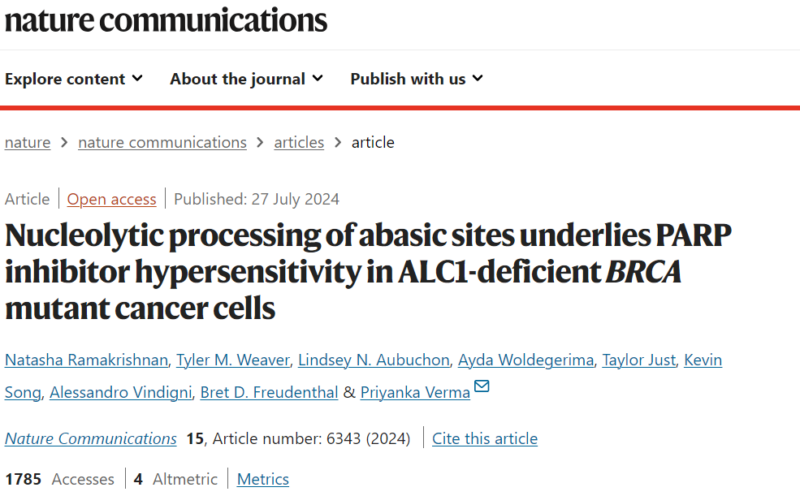A major challenge in treating cancers, especially those with BRCA mutations, is finding ways to exploit these vulnerabilities to kill cancer cells while sparing healthy ones. One promising approach involves using PARP inhibitors (PARPi), which trap repair enzymes at sites of DNA damage, preventing cancer cells from fixing their DNA and causing them to die. However, not all cancer cells respond equally to these drugs, and understanding the underlying mechanisms is key to improving treatment.
The research in the Verma lab is particularly cool because it sheds light on why some cancer cells are sensitive to PARP inhibitors. At the core of the problem is a protein called ALC1, which acts like a locksmith for DNA, unlocking hidden damage sites so another protein, APE1, can repair them. When ALC1 is missing, these hidden damage sites accumulate and only become accessible during DNA replication, causing breaks and stalling the process. These replication-induced breaks make cancer cells more vulnerable to PARP inhibitors because the drugs trap repair enzymes at these breaks, preventing the resumption of DNA replication and leading to cell death.

To put it simply, think of DNA as a zipper that can get stuck if it hits a broken tooth. Normally, ALC1 helps fix these broken teeth before the zipper gets there. Without ALC1, these breaks remain hidden until the zipper (DNA replication) hits them, causing it to jam and break further. PARP inhibitors trap the broken zipper, making it impossible for the cancer cell to continue growing.

This incredible research provides a deeper understanding of how hidden DNA damage sites, when exposed, play a crucial role in making certain cancer cells highly sensitive to PARP inhibitors. These insights can help develop better-targeted treatments for cancers with BRCA mutations, potentially leading to more effective therapies with fewer side effects.”
Authors: Natasha Ramakrishnan, Tyler M. Weaver, Lindsey N. Aubuchon, Ayda Woldegerima, Taylor Just, Kevin Song, Alessandro Vindigni, Bret D. Freudenthal and Priyanka Verma.

Find the lab here.

